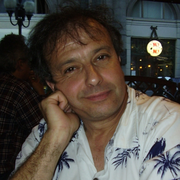The IEEE Distinguished Lecturer of Signal Processing Society Prof. Hamid Krim is going to deliver a speech on Friday, June 10 in two places:
- 10:00 in Tallinn University of Technology, auditorium NRG-131 (Faculty of Power Engineering building at Ehitajate tee 5), and
- 15:30 – 17:30 in University of Tartu, auditorium (room 111) of the Computer Science Department, located at Juhan Liivi 2, 50409 Tartu.
The event in Tartu is organized by the University of Tartu IEEE Student Branch, and sponsored by the iCV Research Group. The speech will be followed by free discussion and refreshments. Two attendants will win prizes each being worth a one-year IEEE student membership. For more information, you may contact us at ieee AT ut.ee, or visit our website http://ieee.ut.ee/ or our Facebook page https://www.facebook.com/IEEETartu/.”
Title: Convexity, Sparsity, Nullity and all that….
Abstract: High dimensional data exhibit distinct properties compared to its low dimensional counterpart; this causes a common performance decrease and a formidable computational cost increase of traditional approaches. Novel methodologies are therefore needed to characterize data in high dimensional spaces. Considering the parsimonious degrees of freedom of high dimensional data compared to its dimensionality, we study the union-of-subspaces (UoS) model, as a generalization of the linear subspace model. The UoS model preserves the simplicity of the linear subspace model, and enjoys the additional ability to address nonlinear data. We show a sufficient condition to use l1 minimization to reveal the underlying UoS structure, and further propose a bi-sparsity model (RoSure) as an effective algorithm, to recover the given data characterized by the UoS model from errors/corruptions. As an interesting twist on the related problem of Dictionary Learning Problem, we discuss the sparse null space problem (SNS). Based on linear equality constraint, it first appeared in 1986 and has since inspired results, such as sparse basis pursuit, we investigate its relation to the analysis dictionary learning problem, and show that the SNS problem plays a central role, and may naturally be exploited to solve dictionary learning problems. Substantiating examples are provided, and the application and performance of these approaches are demonstrated on a wide range of problems, such as face clustering and video segmentation.
 Biography: Hamid Krim received his BSc. MSc. and Ph.D. in Electrical Engineering. He was a Member of Technical Staff at AT&T Bell Labs, where he has conducted R&D in the areas of telephony and digital communication systems/subsystems. Following an NSF postdoctoral fellowship at Foreign Centers of Excellence, LSS/University of Orsay, Paris, France, he joined the Laboratory for Information and Decision Systems, MIT, Cambridge, MA as a Research Scientist and where he was performing and supervising research. He is presently Professor of Electrical Engineering in the ECE Department, North Carolina State University, Raleigh, leading the Vision, Information and Statistical Signal Theories and Applications group. His research interests are in statistical signal and image analysis and mathematical modeling with a keen emphasis on applied problems in classification and recognition using geometric and topological tools. He has served and is currently serving on the IEEE editorial board of SP, and the TCs of SPTM and Big Data Initiative, as well as an AE of the new IEEE Transactions on SP on Information Processing on Networks, and of the IEEE SP Magazine. He is also one of the 2015-2016 Distinguished Lecturers of the IEEE SP Society.
Biography: Hamid Krim received his BSc. MSc. and Ph.D. in Electrical Engineering. He was a Member of Technical Staff at AT&T Bell Labs, where he has conducted R&D in the areas of telephony and digital communication systems/subsystems. Following an NSF postdoctoral fellowship at Foreign Centers of Excellence, LSS/University of Orsay, Paris, France, he joined the Laboratory for Information and Decision Systems, MIT, Cambridge, MA as a Research Scientist and where he was performing and supervising research. He is presently Professor of Electrical Engineering in the ECE Department, North Carolina State University, Raleigh, leading the Vision, Information and Statistical Signal Theories and Applications group. His research interests are in statistical signal and image analysis and mathematical modeling with a keen emphasis on applied problems in classification and recognition using geometric and topological tools. He has served and is currently serving on the IEEE editorial board of SP, and the TCs of SPTM and Big Data Initiative, as well as an AE of the new IEEE Transactions on SP on Information Processing on Networks, and of the IEEE SP Magazine. He is also one of the 2015-2016 Distinguished Lecturers of the IEEE SP Society.
Additional information:
Morteza Daneshmand, e-mail: mortezad AT ut.ee